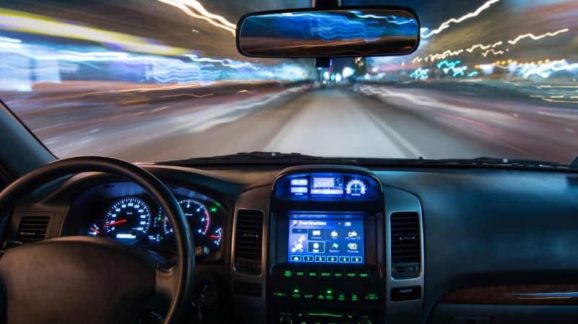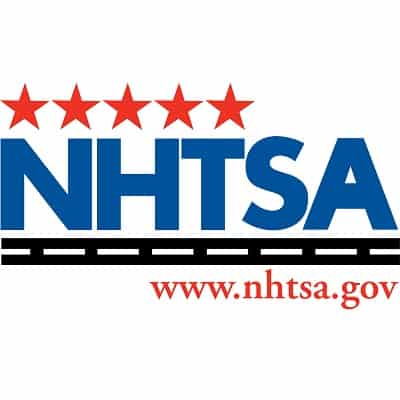David Friedman Swings and Misses at AV START Act

 Axios recently launched a newsletter dedicated to automated vehicles. In the most recent issue, David Friedman attacks bipartisan legislation in Congress aimed at speeding regulatory modernization for highly automated vehicles (HAVs), commonly called self-driving cars. Like Sen. Dianne Feinstein (D-CA) and Joan Claybrook before him, Friedman regurgitates debunked talking points in opposition to the Senate’s AV START Act.
Axios recently launched a newsletter dedicated to automated vehicles. In the most recent issue, David Friedman attacks bipartisan legislation in Congress aimed at speeding regulatory modernization for highly automated vehicles (HAVs), commonly called self-driving cars. Like Sen. Dianne Feinstein (D-CA) and Joan Claybrook before him, Friedman regurgitates debunked talking points in opposition to the Senate’s AV START Act.
Friedman is now at the progressive advocacy organization Consumers Union as vice president for advocacy. Earlier, he was a political appointee in the Obama administration in the Department of Energy and National Highway Traffic Safety Administration (NHTSA), where he briefly served as deputy administrator and then acting administrator when Administrator David Strickland resigned. Before that, he worked for the progressive advocacy organization Union of Concerned Scientists. Most of his career has focused on advocating for alternatively fueled vehicles, not auto safety.
Despite his brief tenue as deputy and acting NHTSA administrator and with little background in auto safety, he has been billed as an expert on auto safety regulation and self-driving cars. In the Axios piece, he makes a number of misleading claims. Below I quote Friedman and respond:
- “Automakers and tech companies are lobbying for a bill in the Senate, the AV START Act, that would allow millions of self-driving vehicles to come on the market that are exempt from existing federal rules while requiring no new ones to ensure autonomous vehicles are safer than the cars we have today”
Section 6 of the AV START Act would increase the current annual cap on manufacturer exemptions to federal motor vehicle safety standards (FMVSS) for HAVs. However, Friedman’s above claim is carefully worded to mislead gullible readers. While the cap would rise for annual HAV FMVSS exemptions, the longstanding requirement that manufacturers demonstrate that the new technologies for which they are seeking exemptions meet “a safety level at least equal to the safety level of the standard” remains unchanged. In order to seek an exemption, manufacturers must demonstrate to the Secretary of Transportation that their would-be exempt technologies are just as safe as or safer than currently mandated technologies.
- “Commercial air travel is carefully regulated and the FAA is funded at $17 billion a year, helping to make airline fatalities extremely rare in the U.S. However, the agency in charge of auto safety, NHTSA, has a budget of less than $1 billion and only voluntary guidelines to make sure self-driving cars are safe before they hit the road”
Making comparisons with NHTSA and the Federal Aviation Administration is popular among opponents of the AV START Act, but ignores key differences. First, more than 80 percent of that $17 billion operating budget is spent on air traffic control and airports, not safety programs. The FAA safety budget is only around $1.5 billion. FAA also regulates carrier operations, unlike NHTSA, where road carrier operations are regulated by the Federal Motor Carrier Safety Administration and the Pipeline and Hazardous Materials Safety Administration.
Second, like the Food and Drug Administration, FAA regulation is generally characterized as being one of pre-market approval. And like the FDA, FAA has been harshly criticized for decades for delaying innovation and harming consumers by denying them safer new products. The FAA during the Obama administration instituted a new “compliance philosophy” in 2015 aimed at reducing unnecessary regulatory burdens that have harmed consumers.
In contrast, since the passage of the National Traffic and Motor Vehicle Safety Act in 1966, federal auto safety regulations have been administered under a regime of self-certification, whereby the government largely incorporates consensus industry standards into regulation and requires manufacturers to affirm their compliance to them. This has worked quite well to date, as Friedman should know given his brief stint at NHTSA.
Section 10 of the AV START Act would establish the Highly Automated Vehicles Technical Committee to make recommendations to the secretary of transportation on changes to existing rules or new rules needed to incorporate HAVs into the federal auto safety regulatory framework. Section 11 then orders the secretary of transportation to determine which recommendations will proceed to the rulemaking stage.
Friedman here is demanding that NHTSA promulgate regulations before technical standards are published. This is completely backwards. Since 1996 with the passage of the National Technology Transfer and Advancement Act (as well as 1998’s OMB Circular A-119 implementing the Act’s standards conformity provisions, which was updated in 2016), Congress has required that regulatory agencies should rely, whenever possible, on voluntary consensus standards to inform their rulemakings.
What this means is that technical standards informed by expert engineers outside of government should be incorporated into regulations, rather than agencies attempting to issue government-unique standards developed by bureaucrats, who rarely possess the level of technical expertise commonly found in industry and academia. By demanding the promulgation of regulations prior to the development of consensus technical standards, Friedman apparently prefers NHTSA to fly blind. Even if it didn’t contradict longstanding federal policy, this is hardly a pro-safety position.
For those interested in HAV-related consensus standards currently under development that may be ripe for incorporation into FMVSS in the future after they are published, see Appendix C, Table 2 of the U.S. Department of Transportation’s recently published AV 3.0 guidance document.
- “What’s needed: Consumers deserve strong protections that are missing from the bills before Congress… State and local authority to limit the deployment of AVs until these federal rules are in place”
Section 3 of the AV START Act would amend 49 U.S.C. § 30103(b) to explicitly preempt state and local governments from regulating HAVs on matters related to system safety, data recording, cybersecurity, human-machine interface, crashworthiness, capabilities, post-crash behavior, or automation function.
All of these matters are related to the safe design and performance of motor vehicle technologies incorporated into HAVs, which have been the sole domain of NHTSA in its nearly half century of existence. Friedman fails to mention that 49 U.S.C. § 30103(b) already preempts state and local governments from regulating anything covered by NHTSA-administered FMVSS.
Section 3 is aimed at countering poorly crafted state laws related to HAVs, which then often require ill-equipped state Department of Motor Vehicles employees to promulgate NHTSA-style performance regulations. This mess has already been playing out in California, Michigan, and a few other states for the past half-decade thanks to a vacuum created by Congress’s inaction. As no serious person believes every state should spawn a mini-NHTSA staffed by inexperienced DMV employees, preventing a patchwork of bad state laws ought to be a top priority of Congress.